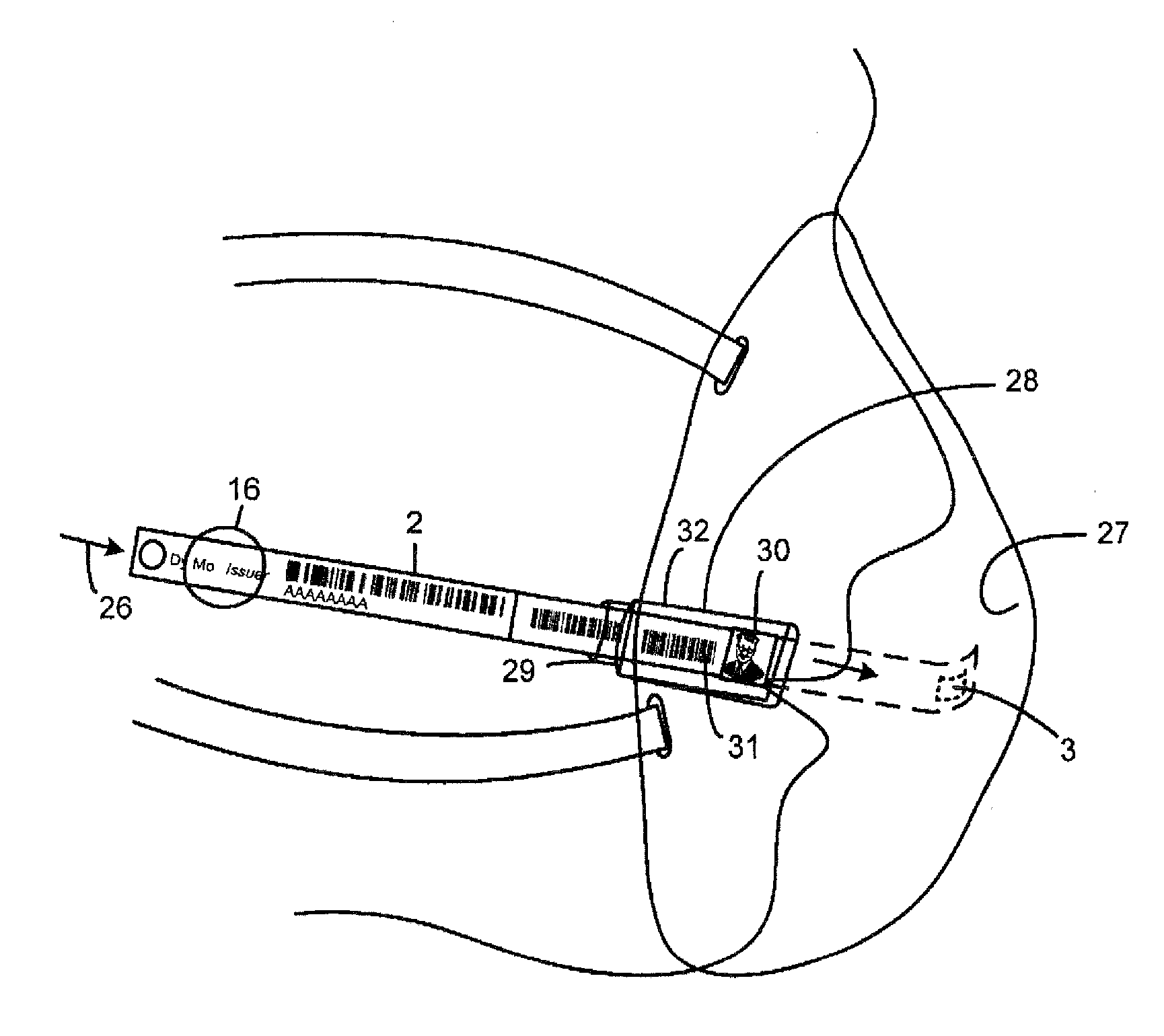Droplet collection devices and methods to detect and control airborne communicable diseases utilizing RFID
a technology of airborne communicable diseases and droplet collection, which is applied in the field of droplet collection devices and methods to detect and control airborne communicable diseases, can solve the problems of unremarkable progress in society's preparation and procedures for controlling outbreaks of serious airborne communicable diseases, increased risk of serious or life-threatening diseases that are resistant or difficult to treat with existing therapies, and increased risk of intentionally engineered pathogens. , to achieve the effect of efficient, convenient and cost-
- Summary
- Abstract
- Description
- Claims
- Application Information
AI Technical Summary
Benefits of technology
Problems solved by technology
Method used
Image
Examples
Embodiment Construction
[0030]Reference will now be made in detail to the presently preferred embodiments of the invention, one or more examples of which are illustrated in the drawings. Each example is provided by way of explanation of the invention and is not meant as a limitation of the invention. For example, features illustrated and described as part of one embodiment or figure can be used on another embodiment or figure to yield yet another embodiment. It is intended that the present invention include such modifications and variations.
DEFINITIONS
[0031]In reference to the invention, the following terms are defined as set forth below.
[0032]As used herein, “airborne” refers to infectious agents that may be transmitted from persons or animals or environments by either “droplet infection” via the transmission of infectious droplets, or by “airborne transmission” via the transmission of infectious “airborne droplet nuclei”.
[0033]As used herein, the phrase “airborne droplet nuclei” refers to small-particle ...
PUM
| Property | Measurement | Unit |
|---|---|---|
| size | aaaaa | aaaaa |
| travel distances | aaaaa | aaaaa |
| transparent | aaaaa | aaaaa |
Abstract
Description
Claims
Application Information
 Login to View More
Login to View More - R&D
- Intellectual Property
- Life Sciences
- Materials
- Tech Scout
- Unparalleled Data Quality
- Higher Quality Content
- 60% Fewer Hallucinations
Browse by: Latest US Patents, China's latest patents, Technical Efficacy Thesaurus, Application Domain, Technology Topic, Popular Technical Reports.
© 2025 PatSnap. All rights reserved.Legal|Privacy policy|Modern Slavery Act Transparency Statement|Sitemap|About US| Contact US: help@patsnap.com



